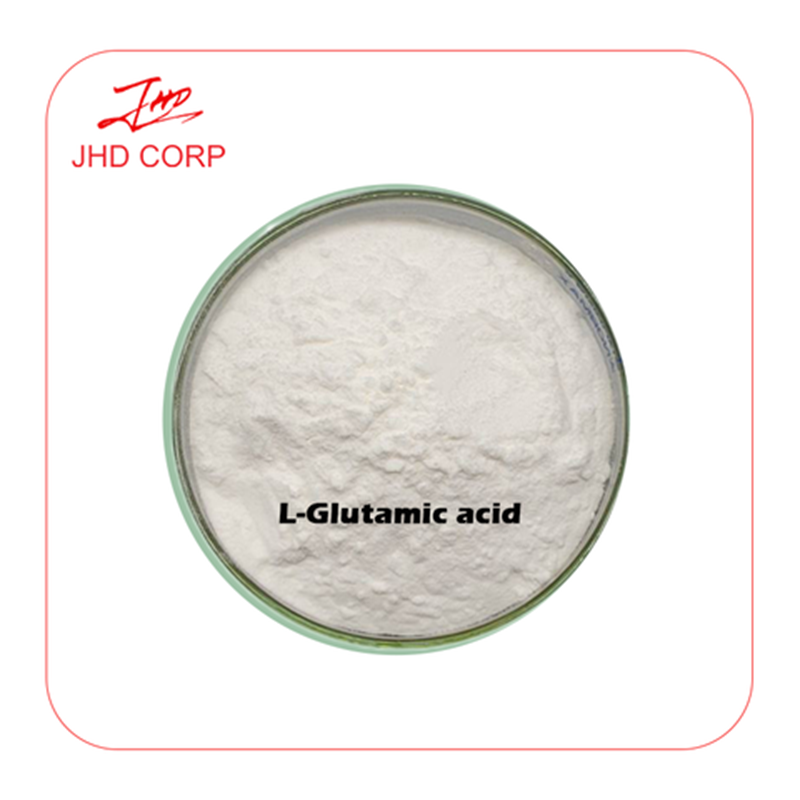Welcome to JHD Nutrasource!
Shop
L-Glutamic Acid
L-Glutamic acid is a white crystalline powder, a non-essential amino acid that is one of the most abundant amino acids in the human body. It has a polar side chain and exists in both free form and as a component of proteins. L-Glutamic acid plays diverse roles in metabolism, neurotransmission, and nitrogen transport.
Description
| Product Name | L-Glutamic |
| Appearance | White Powder |
| Specification | 99% |
| Test Method | HPLC |
| CAS No | 56-86-0 |
| MF | C5H9NO4 |
| Certificate | KOSHER/HALAL/ISO/CGMP/USDAORGANIC |
Functions
- Neurotransmitter function: In the central nervous system, L-Glutamic acid acts as the primary excitatory neurotransmitter. It binds to multiple types of glutamate receptors, including N-methyl-D-aspartate (NMDA), α-amino-3-hydroxy-5-methyl-4-isoxazolepropionic acid (AMPA), and kainate receptors. This binding triggers the influx of ions into neurons, generating electrical signals essential for synaptic plasticity, learning, and memory formation. However, dysregulation of glutamatergic signaling can lead to excitotoxicity, associated with neurodegenerative diseases such as Alzheimer’s and Parkinson’s.
- Nitrogen metabolism: L-Glutamic acid is central to nitrogen metabolism. It serves as a key nitrogen carrier, participating in transamination reactions where it donates or accepts amino groups. This process is vital for the synthesis and degradation of other amino acids. Additionally, it plays a role in the urea cycle, helping to convert toxic ammonia into urea for excretion, thus maintaining nitrogen balance in the body.
- Energy production: Through its involvement in the citric acid cycle, L-Glutamic acid can be metabolized to generate energy. When broken down, it releases carbon skeletons that enter the cycle, contributing to the production of adenosine triphosphate (ATP), the energy currency of cells.
Applications
- Food industry: As a flavor enhancer, L-Glutamic acid, particularly its sodium salt (monosodium glutamate – MSG), is widely used in the food industry. It imparts a savory umami taste to foods, enhancing their overall flavor profile. It is added to various products, including soups, seasonings, snacks, and ready-to-eat meals.
- Dietary supplements: L-Glutamic acid is included in some dietary supplements, often targeted at athletes and individuals with high physical or mental stress. It is believed to support brain function, reduce fatigue, and aid in muscle recovery. Additionally, it can be part of formulations designed to improve nitrogen metabolism and overall nutritional status.
- Pharmaceutical industry: In pharmaceuticals, L-Glutamic acid serves as an intermediate in the synthesis of various drugs. It is also used in parenteral nutrition solutions to provide essential amino acids for patients who cannot meet their nutritional needs orally.

